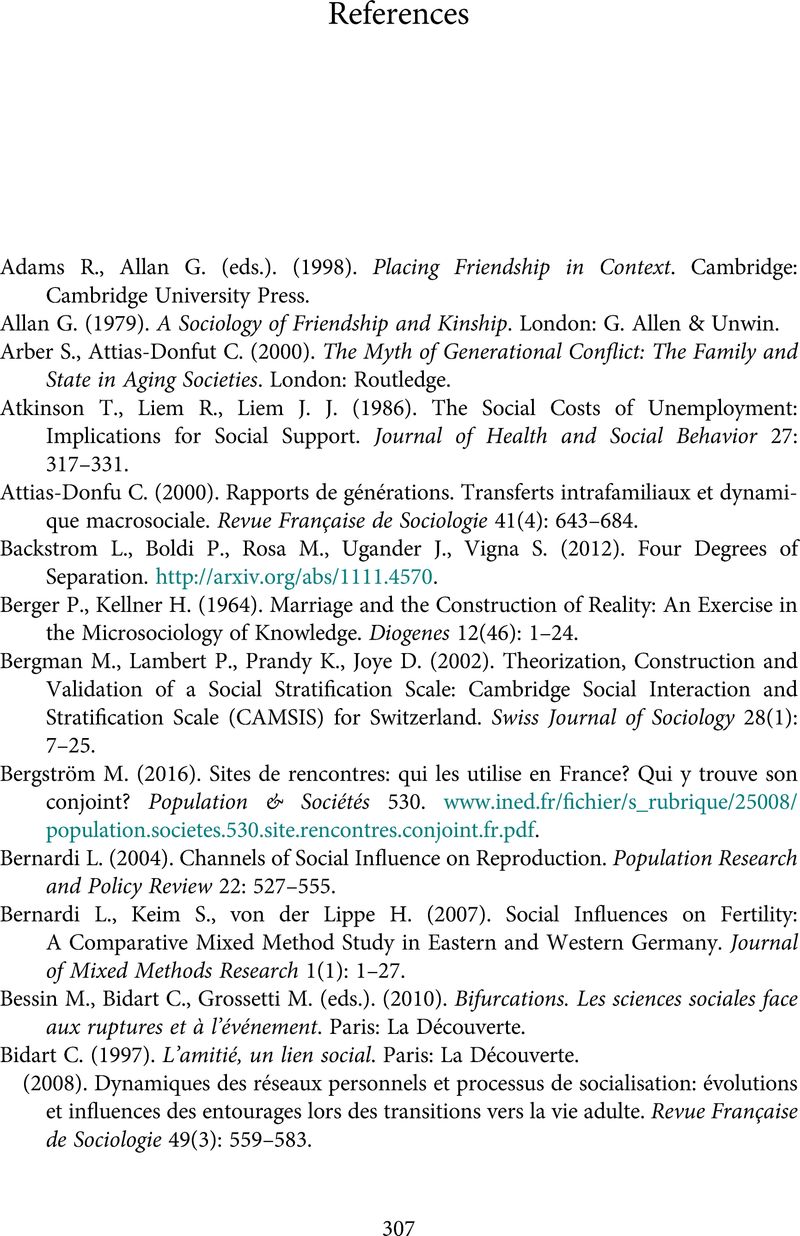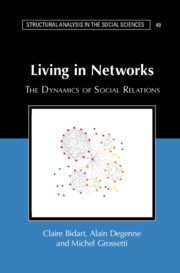Book contents
- Living in Networks
- Structural Analysis in the Social Sciences
- Living in Networks
- Copyright page
- Contents
- Figures
- Tables
- Preface
- Acknowledgments
- Introduction
- Part I Foundations of a Sociology of Relational Dynamics
- Part II Networks and Their Dynamics
- Part III Networks and Social Worlds
- Conclusion
- References
- Index
- Structural Analysis in the Social Sciences
- References
References
Published online by Cambridge University Press: 27 October 2020
- Living in Networks
- Structural Analysis in the Social Sciences
- Living in Networks
- Copyright page
- Contents
- Figures
- Tables
- Preface
- Acknowledgments
- Introduction
- Part I Foundations of a Sociology of Relational Dynamics
- Part II Networks and Their Dynamics
- Part III Networks and Social Worlds
- Conclusion
- References
- Index
- Structural Analysis in the Social Sciences
- References
Summary

- Type
- Chapter
- Information
- Living in NetworksThe Dynamics of Social Relations, pp. 307 - 316Publisher: Cambridge University PressPrint publication year: 2020



